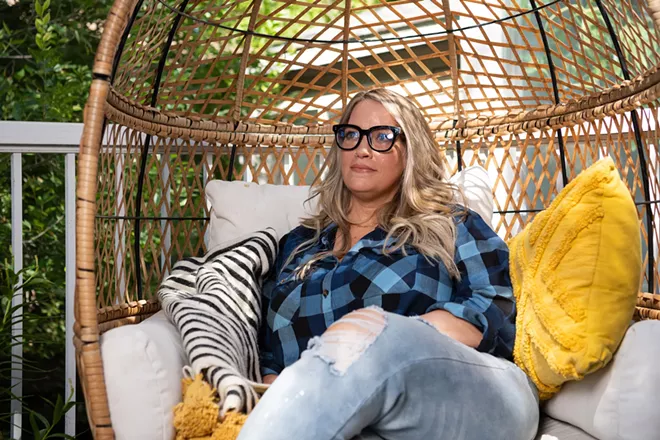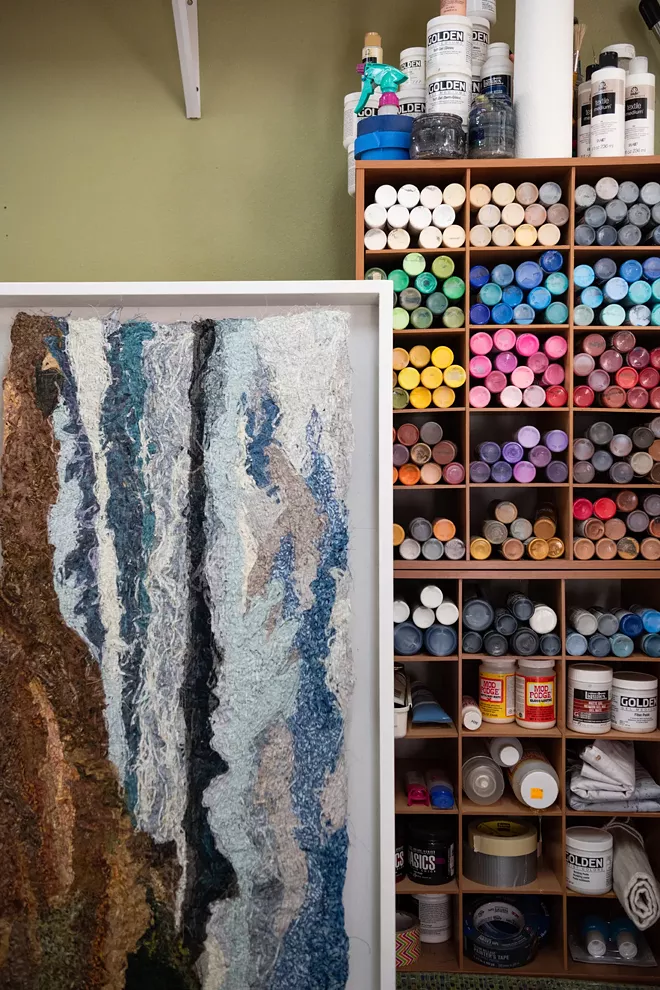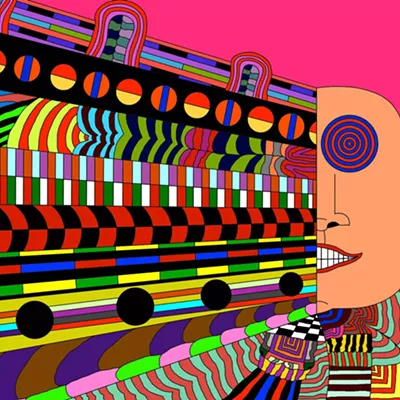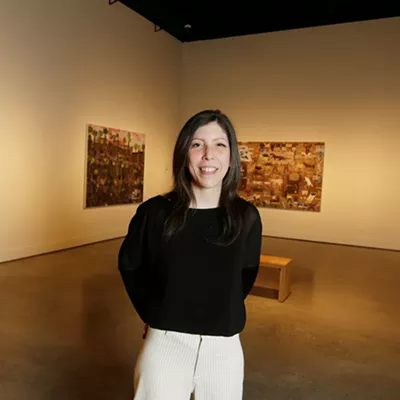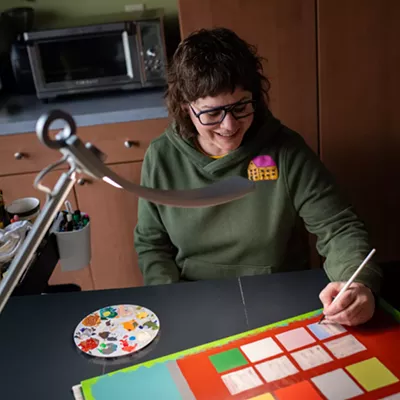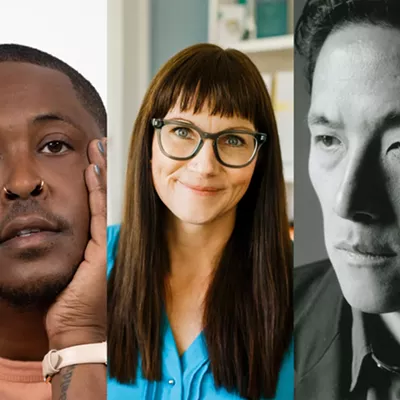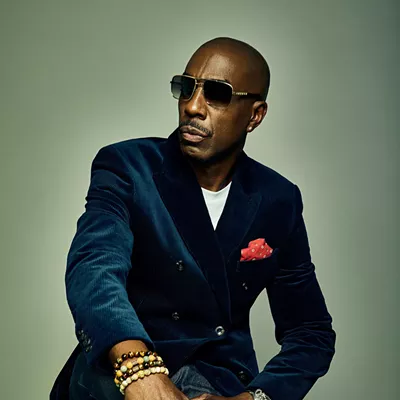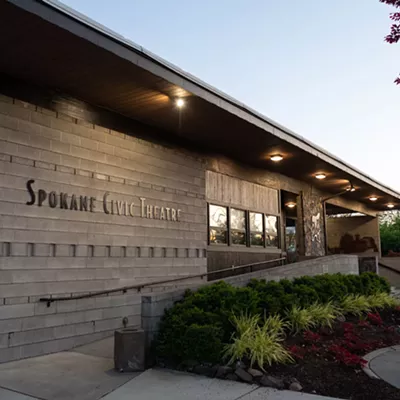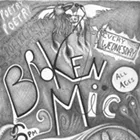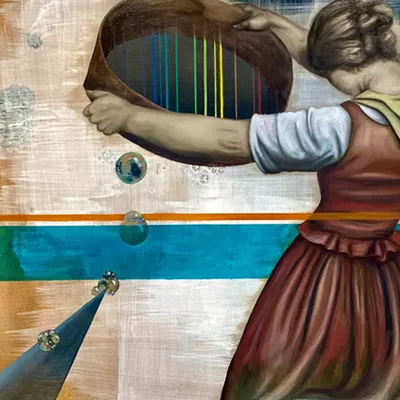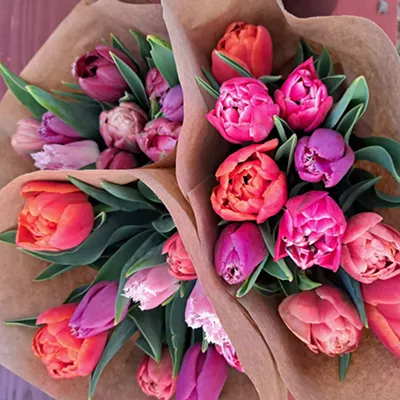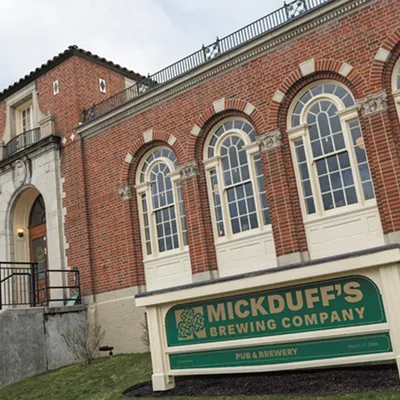Helen Parsons was being witty when she named her Instagram account the Helen Parsons Project, but she will soon have something in common with the '70s-era British band the Alan Parsons Project. She's going to be famous, at least to fans of fiber arts. And that will come as no surprise to those in the Inland Northwest already familiar with her work.
In July, Parsons and her partner, James Barrett, drove to Colorado to film three episodes for Quilting Arts TV. The longstanding show, which airs on PBS' CreateTV channel and reaches an estimated 80 million U.S. households, will begin airing episodes featuring Parsons in mid-October.
"If you're a fiber artist, you definitely know that show," says Parsons, who's been a fan since Quilting Arts TV launched in 2007.
Her more-than-15-minutes-of-fame almost didn't happen, however. Not surprisingly, Parsons was skeptical about the unsolicited email she got in February 2022 from the show's co-host Vivika Hansen DeNegre. Parsons was also unaware that a friend had approached the show's producers on her behalf.
"I've definitely felt a little bit like an outsider," says the self-taught Parsons, whose approach to both technique and subject matter didn't jibe with what she'd seen on the show.
Aside from not being a quilter, Parsons' content tends towards more contemporary themes.
For example, Parsons' mixed-media artworks featured in the Art Spirit Gallery's May show, "Pop! Art Blanche," included images of spray-paint cans, Lucky Strike cigarettes, repeating silhouettes of a Glock pistol overlaid onto a canvas bank bag, and a mixed-media artwork encouraging viewers to "set your television on fire."
This actually intrigued the show's producers.
"Every season of Quilting Arts TV has a unique 'personality' and Helen's artwork helped set the tone for this series," says DeNegre, who is also editor of Quilting Arts magazine. "Her work is special and varied: Some is quirky and off-beat on the surface yet has hidden messages for the viewer to discover."
Some of Parsons' techniques are similarly unorthodox, like the one she calls "impressionist fabric painting."
After developing a contour drawing and selecting a color palette, Parsons pulls from her considerable supply of fabric, all of which is neatly stacked and organized by color in her modest South Hill studio. Then she begins the laborious process of cutting strips of fabric, which resemble a blob of paint when piled together on the table. Parsons will arrange this "paint" onto a water-soluble fabric substructure according to the design plan, eventually machine-stitching the composition. Finally, Parsons submerges the image in water to dissolve the substructure and embellishes the piece with more stitching, appliques, etc.
The resulting piece is flat, like a painting, yet textural and obviously made of fabric, which has always been considered more of a craft medium.
"All of her pieces blend a painter's perspective with an art quilter's love for texture and stitch," DeNegre observes.
They were thrilled, she adds, to see Parsons' work in person and learn more about her journey as an artist.
Since moving to Spokane in 2001, Parsons has continued to explore recurring themes: nostalgia, sense of place, the passing of time, the nature of seeing and knowing.
She's especially drawn to graffiti culture, for example.
"It's this way of saying 'I'm here, I matter,'" Parsons says. She also likes the color, the rawness, the plurality of it, a message that may or may not be readable.
"That's one of the things I like about graffiti writers is a lot of times they'll hide little things on it or it's so busy you have to really focus," she adds.
Many of Parsons' impressionistic fabric paintings attempt to recapture a sense of place, like the wooded area behind the school in Virginia where she also ran cross country as a high school student.
"Maybe it's that runner's high everybody talks about, but I felt like at some point, I wasn't tired," Parsons says of her distance-running youth. "And I was almost levitating."
Contrast that happy moment with nine years ago when Parsons was diagnosed with an auto-immune disease. But rather than step back, Parsons leaned into life, ramping up with shows all over town: New Moon Art Gallery, the recently closed Object Space, and Terrain, including its innovative Window Dressing program.
In 2016, Parsons created the Facebook site Spokane Art Calls, posting opportunities to exhibit.
The "call" gets people interested in the site, says Parsons, but the real benefit is community.
"Creation of art oftentimes is very isolating," she says.
The site continues to grow and has since evolved into a forum for sharing resources, questions and content. Parsons wants to "level the playing field" for artists who might not have access to representation, resources or the kinds of things one might have learned in art school.
Parsons sees her advocacy as a natural extension of her artmaking.
"Sometimes I feel like I'm this scientist who's dissecting humanity and dissecting myself and my feelings about the world and my place in it by creating [my artwork]," Parsons says. "And I don't know if it makes sense to anyone else, but it makes sense to me."
Since returning home from the taping of the show, Parsons has thrown herself into new projects, including being part of the Northwest Museum of Arts and Culture's annual artist studio tour in December.
"The show is definitely a milestone, but fundamentally for me as an artist, I am my happiest when I am just making art." ♦

